Günther Unlustig 🍄
Peter Lustig’s unlustiger verschollener Sohn mit weirden Interessen und Gadsen.
🇩🇪 DE/EN 🇬🇧
<Explaination for anyone not knowing obscure German media>
Peter Lustig used to be the moderator in an old German kids science and nature series called “Löwenzahn” (Dandelion) who shaped our generation.
He also shaped my childhood, and I want to honour him.
My real name also isn’t “Günther”, it’s just a reference to “Olaf, Olaf, Olaf, Günther” from Spongebob: The Movie, because I wanted it to sound like a real name and it makes conversations easier.
- 39 Posts
- 55 Comments
💚
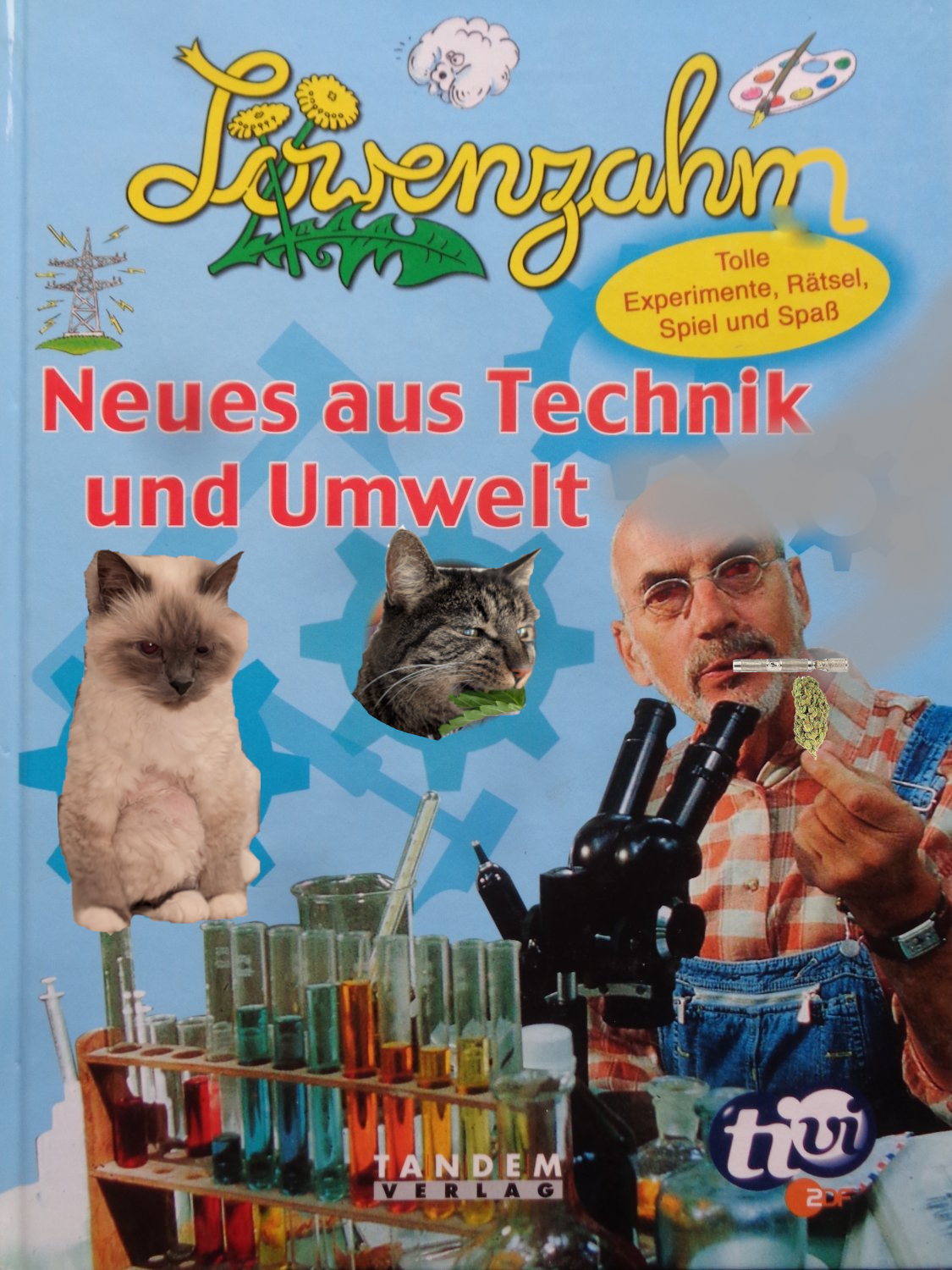
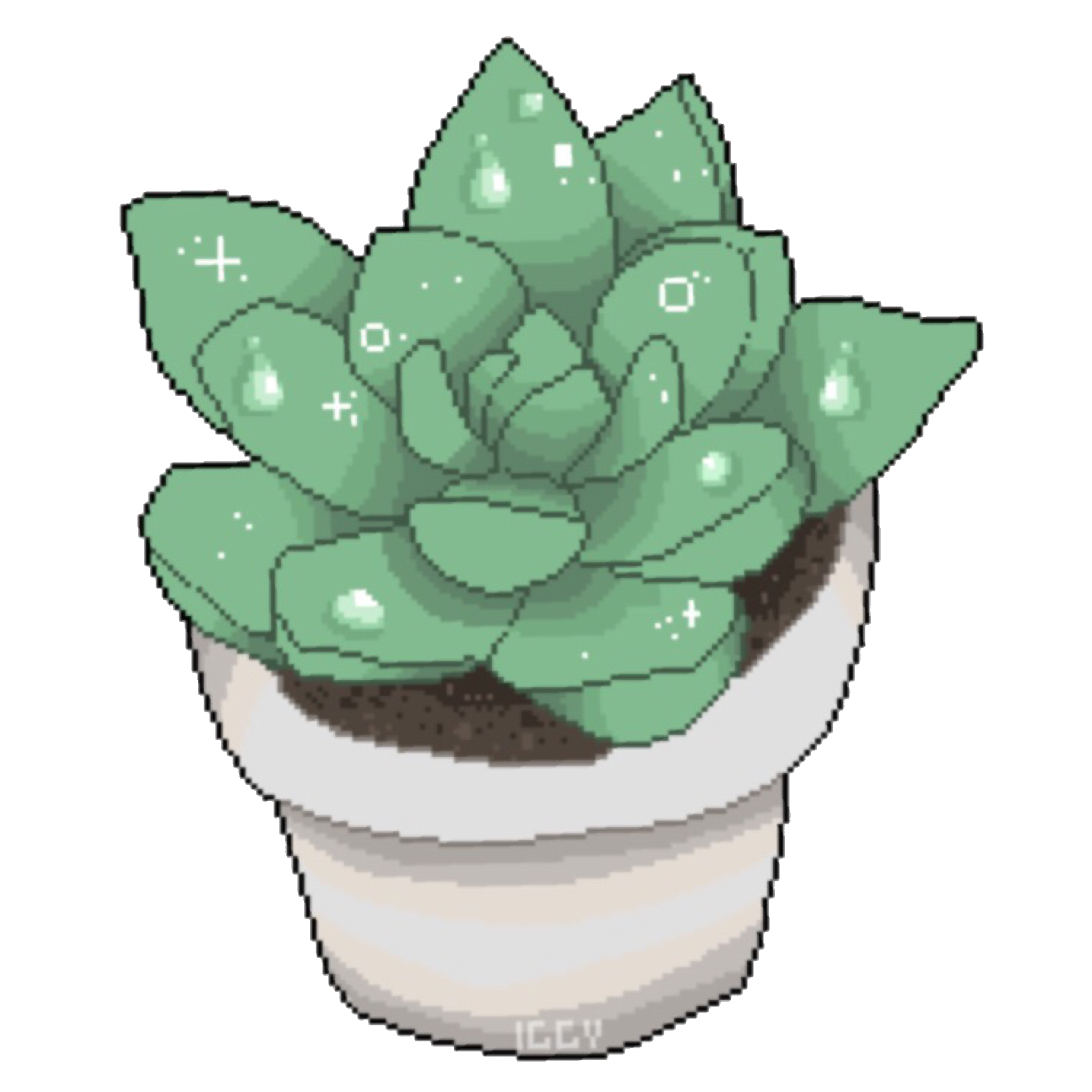 2·3 days ago
2·3 days agoDude, WHAT?
I literally got a cutting a few months ago and had to throw it away/ gifted it so someone else (?) because I read that it is super super toxic.
I feel so dumb right now, fuck.
Thanks for the information. I will see if I can source another cutting, because you need some competition here in this community 😁
Your routine sounds like it already is ideal, great! :)
In my experience, flushing only often tends to remove residues not quite as well as it should be. Do you see those brown colourations on the pumice? Those are waste products of decayed roots.
Maybe you could soak the whole pot for a few hours in lukewarm water. The minerals and exudate are often inside the substrate too, at least I had it in pon.
Also, I now found the culprit of those spots:
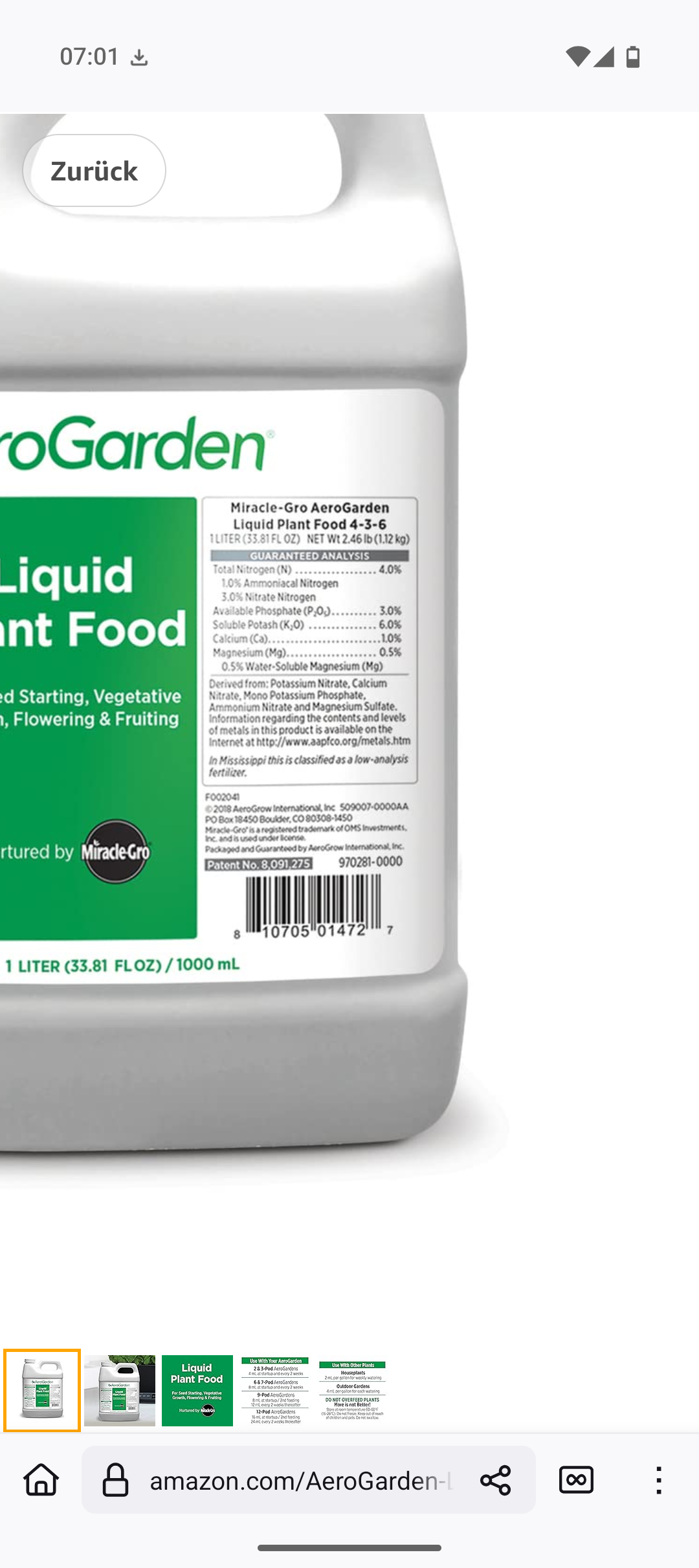
Do you see the ingredient list? It’s super short.
It lacks all micronutrients. This fertilizer is trash. It isn’t “plant food”, it’s the equivalent of a slice of white toast.Definitely get a proper fertilizer, like the one you mentioned from GH.
I personally like Masterblend, because I have a lot of plants and it’s super cheap compared to pre-dissolved ones, while being pretty much the same.Those “good” ones are usually two part systems. They include ALL plants need, including trace elements.
I made a post over at !hydroponics@slrpnk.net on how to make the mixing way easier, without having to measure volumes. Check it out to save some time ;)

 2·4 days ago
2·4 days agoSeeing posts like these makes me sad that I will probably never be able to own one. They’re highly toxic to cats 😥
It doesn’t matter much if you choose a “all purpose” or “gaming” distro. They are mostly the same.
I’m personally a huge fan of Bazzite. It just works and you get a very robust and user friendly piece of software.
Wow! Absolutely amazing! Great job! 💪
For me, it looks like a deficiency. What fertilizer and water do you use?
Also, how do you use the pon? AFAIK, pon needs to cycle between dry and wet, or else the roots might suffocate. Do you use a submerged, or a wick setup?
The roots should be buried, or else they might dry out and get damaged. Is that on purpose?
Do you flush and soak it regularly? It looks like there are some residues on top.
The nutrient solution is drawn up and then dries out on the surface, because the substrate is highly wicking.I also made similar experiences and decided to not use pon anymore, because it just doesn’t work for my type of (submerged) setup. I personally prefer LECA instead.

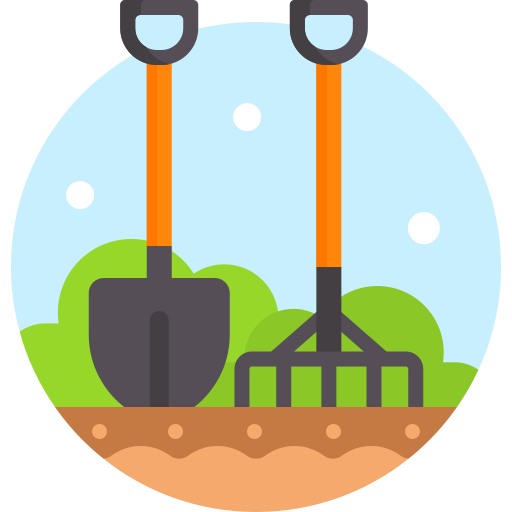 1·7 days ago
1·7 days agoHow does the soil feel? Has it been overly wet in the last days?
Do you fertilize it?
Might be overwatering, (potassium?) deficiency, or heat stress. Probably a mix of those.

 2·8 days ago
2·8 days agoMaybe they can help you on your balcony!
I don’t think so, because there are so many that are attracted by other things, such as honeydew.
But I have a Sarracenia out there!
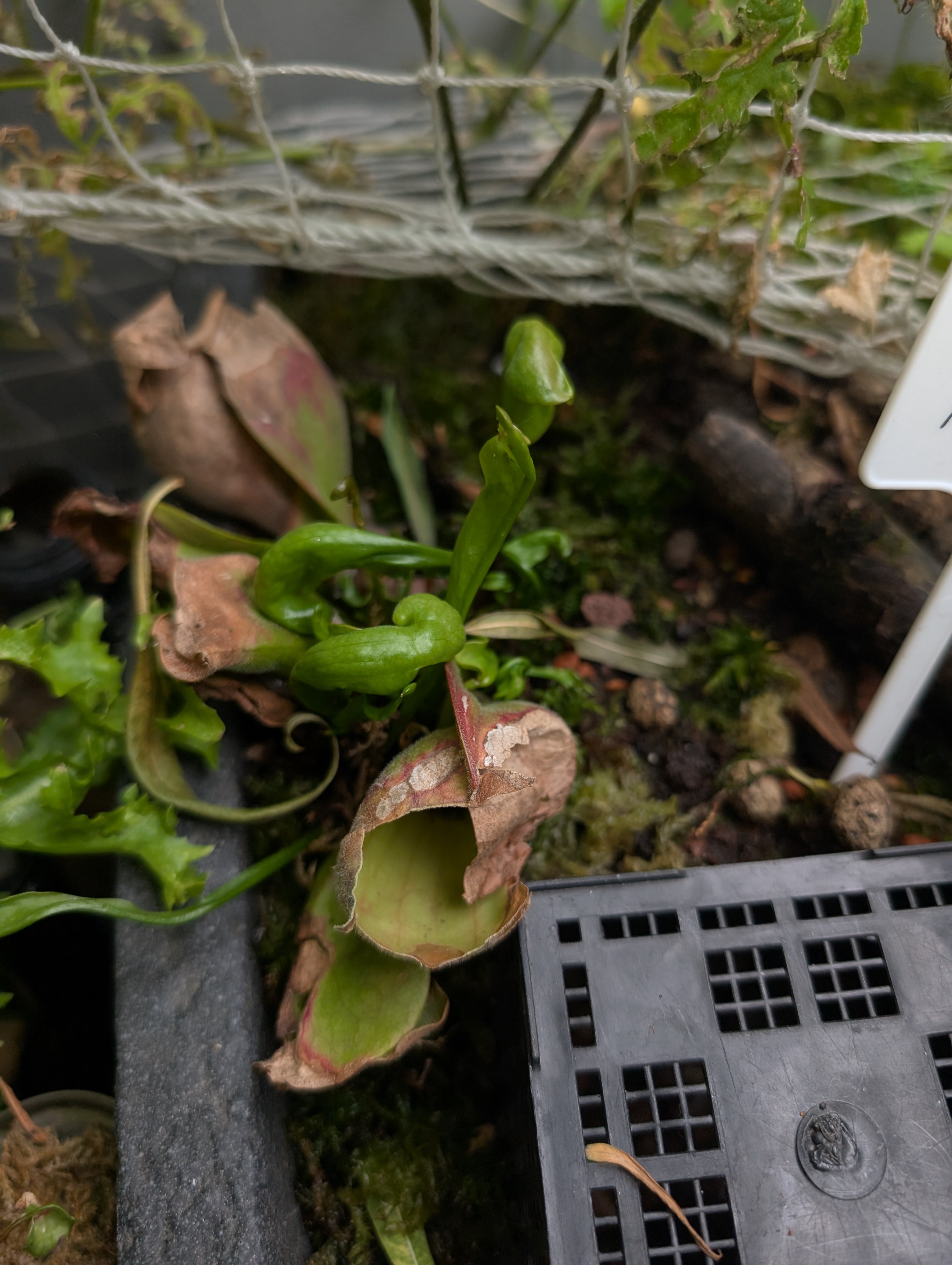
It wasn’t really happy until now, but once it acclimatises, it might catch a few ants and maybe wasps?
My nepenthes is indoor only, because I’m afraid I might introduce pests to my other houseplants when I have to bring it indoors over winter.
That’s amazing. Did the buggy get there on its own or did you help?
I had to help a bit 🙃
I put the bug onto the plant itself, but it crawled in there on its own.My neps are still learning to walk. They’ve been fed synthetic fertiliser up until now, and they yet have to develop their hunting instincts :D

 6·9 days ago
6·9 days agoDefinitely take some leaf pullings before! Just in case, if the soap kills the plants, you have a backup and can start growing them again.
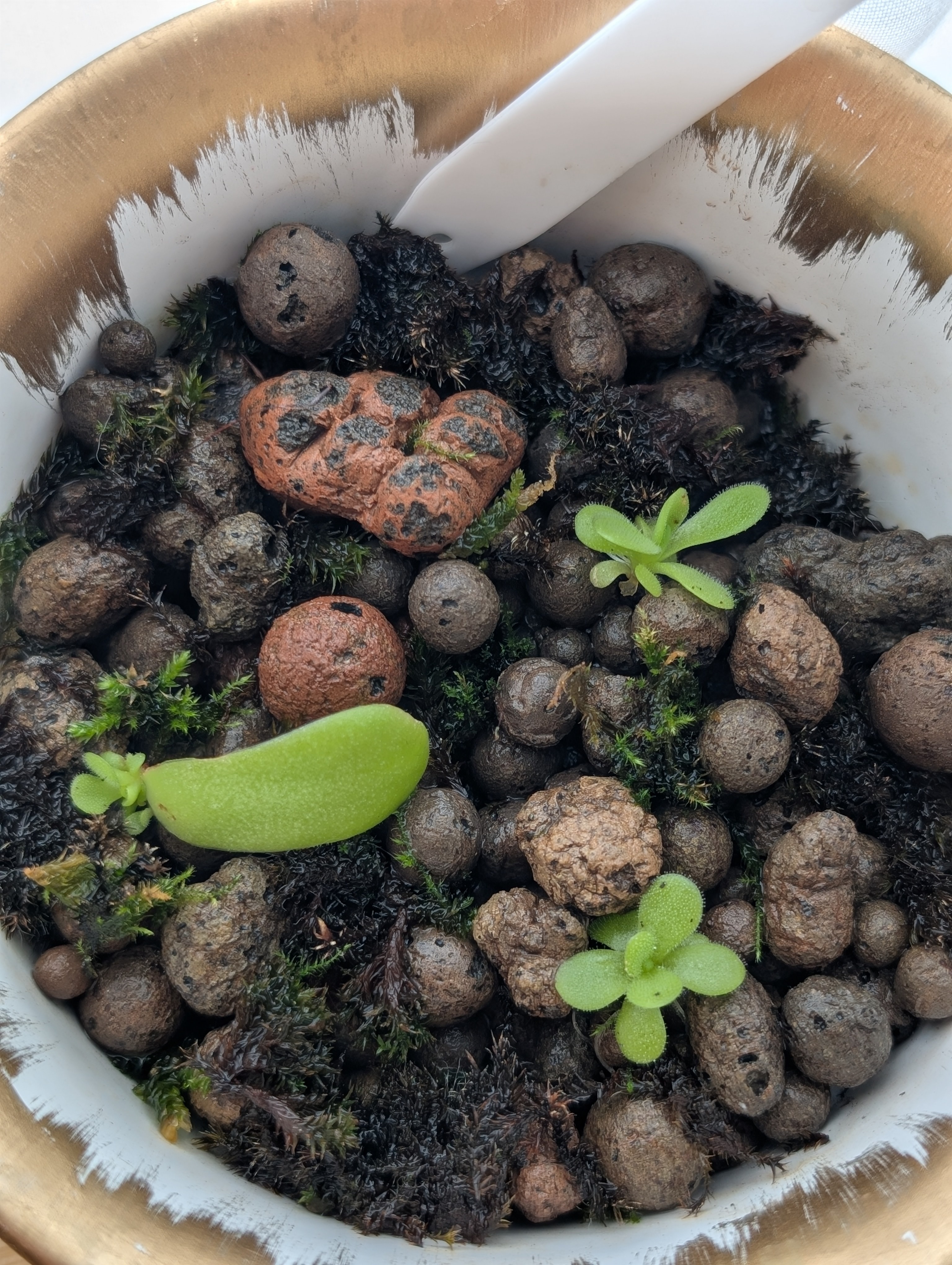
I’m in a similar position with my Drosera right now.
What substrate do you use for your pings? If you use peat or other organic media, I think they won’t be super happy. They arent bog plants and don’t like to be having wet feet constantly afaik

 11·9 days ago
11·9 days agoI think I’m gonna print this out as a sticker, thanks! 🤗

 2·14 days ago
2·14 days agoI think the brand doesn’t matter much. They all work fine.
I will make a post about it, so it is easier accessible for others too.
TL;DR what I’ll say:
- Expensive isn’t much better per se, but there are still some with worse quality than others (unpuffed balls, etc.)
- There’s “red” LECA (smoother surface, but more compact) and “grey” LECA (very lightweight, porous and floats). Both have their own (small) pros and cons, but still similar. I just mixed them by now for aesthetic purposes lol
- The size variation matters a lot. Bigger, rounder balls = more air gaps. Also, I’ve found smaller beads to also be less porous than bigger ones.
- You have to soak it first in pure water when dry. If you use tap water instead, it will soak up the minerals and leach them out over the next weeks and alter the water chemistry, including pH.
You can reverse this pretty fast by boiling in rain/ distilled water. The pressure from the boiling will drive out the remaining stuff from the pores. - All in all, aside from the dust and (often) leftover minerals in the beginning, it is totally inert once you’ve soaked it in pure water at least two times.

 2·15 days ago
2·15 days agoI made a guide a few weeks ago, here it is
LECA is expanded clay balls. Similar to pumice for example, it has a lot of pores, which draw up water by capillary action. It is constantly moist, but also highly aerated and my hydroponic medium of choice.
I also made a few posts about it, including microscope pictures and explaining the concept of semi-hydro :)

 31·16 days ago
31·16 days agoYou’re growing Cannabis, which draws literally every sweet-sensing pest.
Funnily enough, my weed is pretty much the only thing (and chillis) that isn’t much affected. The willow is the worst one, and the pepino second.
Those things on the underside of the leaves you posted are Ladybug larvae, and they are GOOD.
Those larvae pictures are already a bit older, maybe two weeks? They probably got killed by the ants or wasps, because I rarely see them around anymore.
I also rarely see any other aphid eating insects anymore, only ants and ants carrying carcasses :(

 9·16 days ago
9·16 days agoObsidian or Logseq.
I’ve used Logseq for my lab journal, thoughts, and whatsoever, and it works excellent for that.
- You can link different things/ dates with each entry
- Markdown
- Functions and querys
- Local
- Very flexible
- And you can find pretty much every thought you’ve ever had, nothing is lost.
It can be tricky tho if you want to collaborate, because the sync isn’t perfect yet, but the devs are working really hard on it
I have good experiences with cuneiform. You only need a bit of clay, a wedge and some dedication.
Especially in meetings it has the advantage that it is less noisy compared to your rock and won’t ever be noticed in your tribes meetings.
It doesn’t support real Markdown tho
Great. The next logical step in this evolution is going back to pen and paper, lol
Fuck lawns!
Have you considered native pollinator meadows, moss gardens or clover? They have an actual use for nature too, are pretty much zero maintenance and are not just eye candy 😉
Fedora Atomic because I don’t fucking care what package manager and whatnot sits underneath.
I just wanna relax in my free time and not worry about all this fucking nerd stuff.
Touching grass > Troubleshooting a broken system


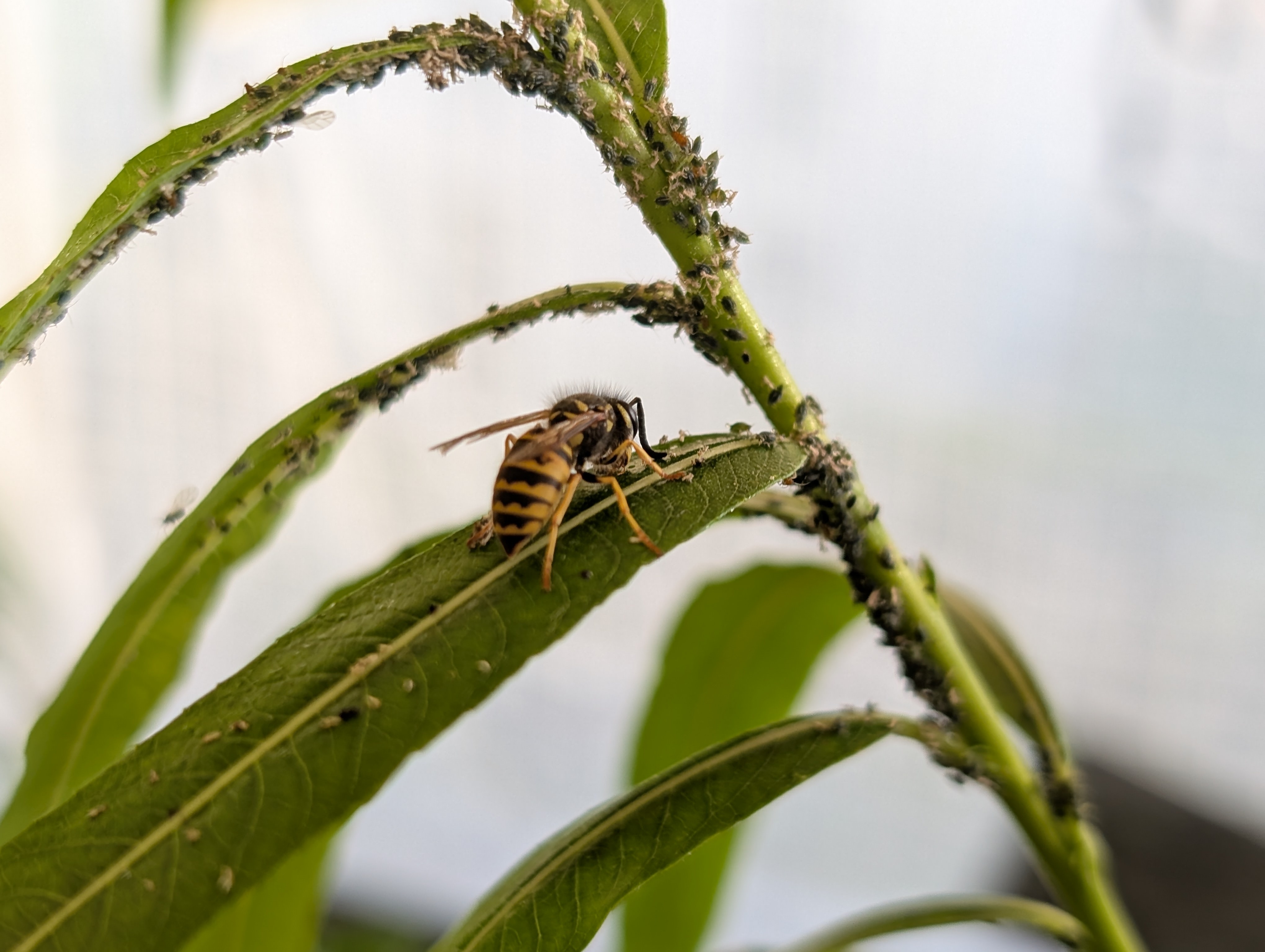

Thangs